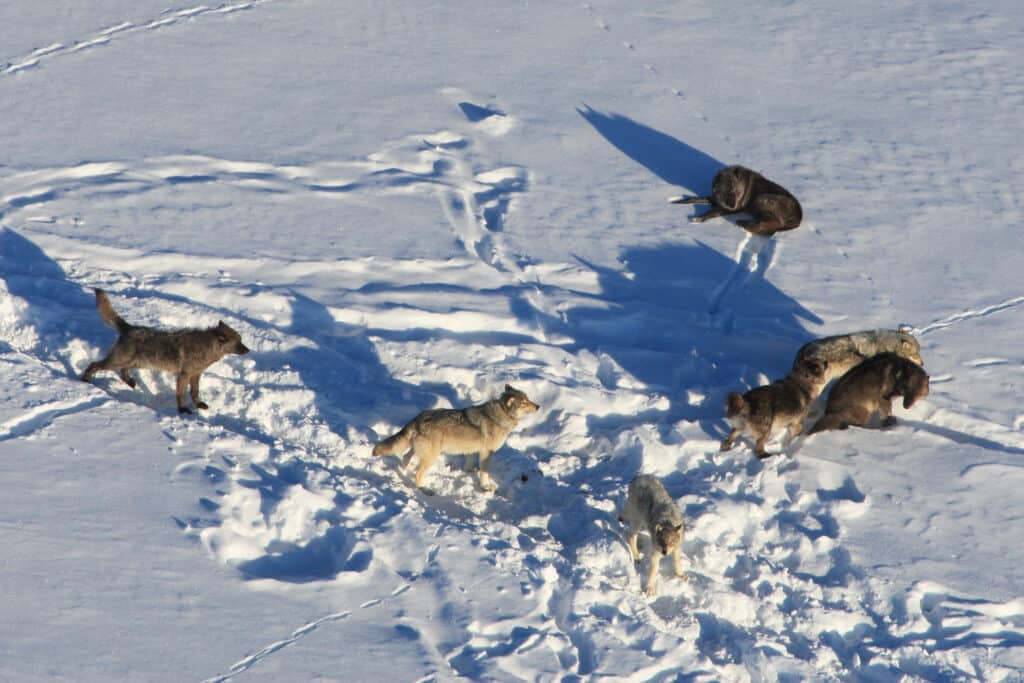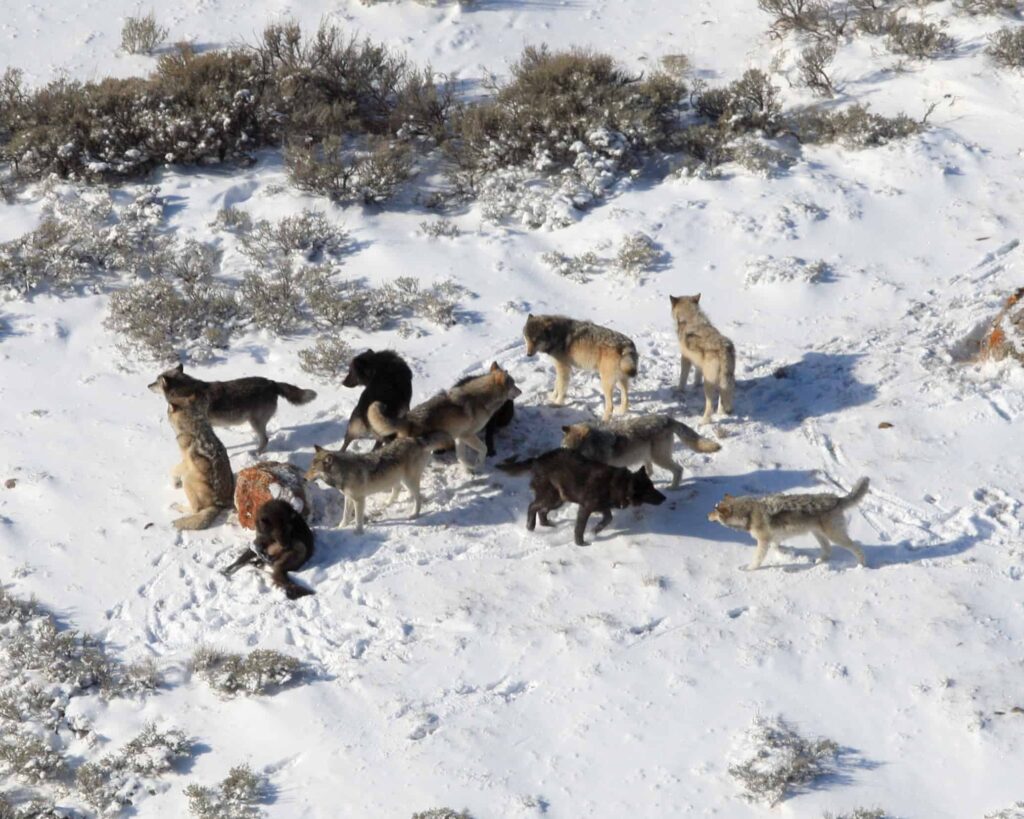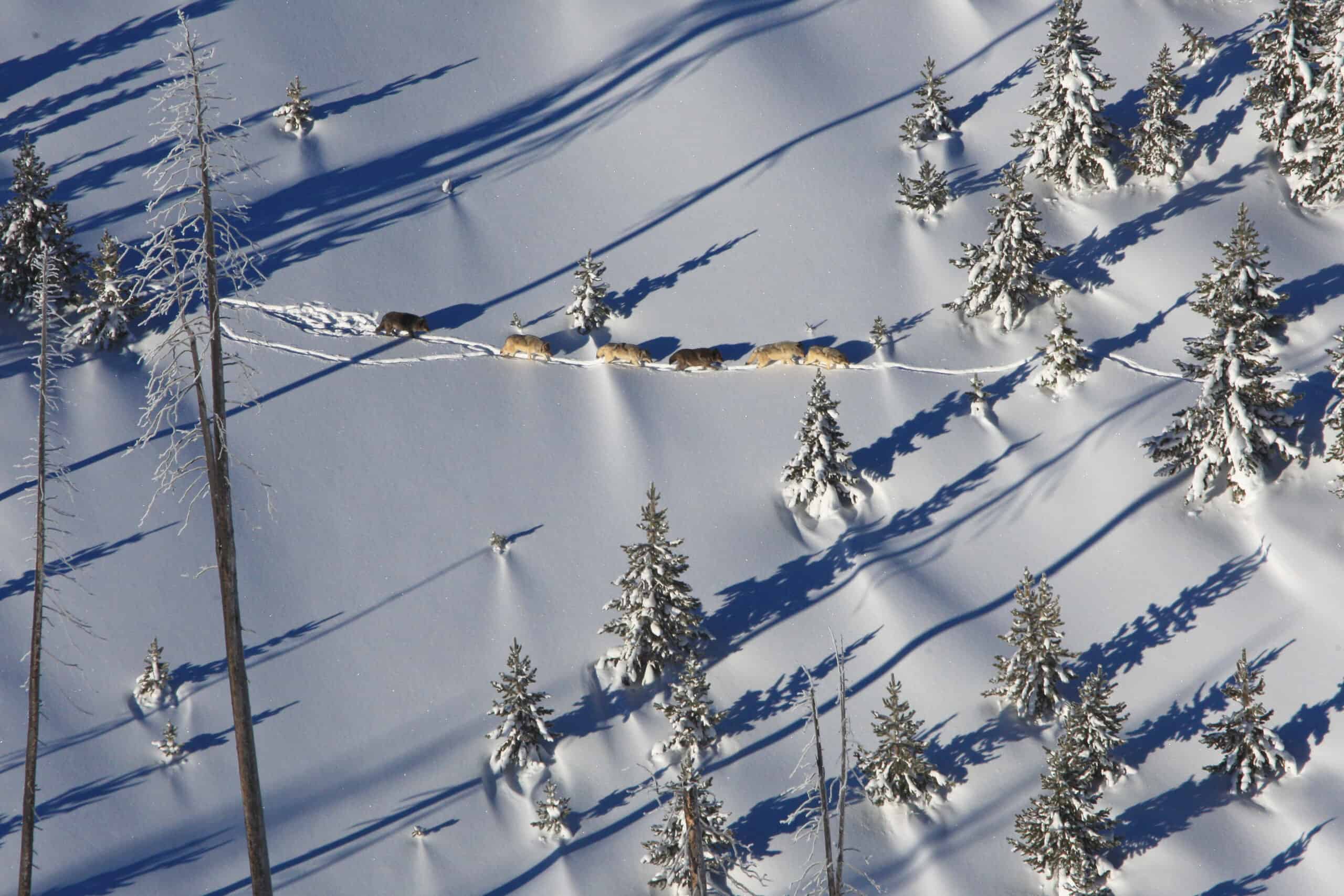Share this article
Wildlife Featured in this article
- gray wolves
Human-caused mortality influences wolf pack dynamics
From collisions to hunting, human-caused wolf deaths can change wolf pack persistence
When wolves are killed by humans, it doesn’t just affect their population numbers. It can also change their pack dynamics—even inside national parks, where hunting isn’t allowed.
In a recent study published in Frontiers in Ecology and the Environment, researchers took long-term data from five national parks to figure out how human-caused mortality impacted wolf packs inside them. They found that packs that experienced at least one human-caused mortality were less likely to persist and reproduce the following year.
“We should start asking ourselves how much pack turnover we’re willing to accept that we’re causing,” said Kira Cassidy, a researcher with the Yellowstone Wolf Project and the study’s lead author.
Cassidy had previously focused on territory and aggression between packs. She took her interest in pack dynamics in a new direction when she worked with Doug Smith, the Yellowstone Wolf Project director, who was focused on wolf biology. Over the decades, though, she gave a lot of thought to human impacts on wolves. “We decided to bring the two main topics together,” she said.

While hunting and other lethal management isn’t allowed inside national parks, Cassidy and her team wondered how these actions outside park boundaries could influence packs and what effect vehicle strikes inside parks might have on them. She and her colleagues tapped into wolf pack data from Denali National Park and Preserve, Grand Teton National Park, Voyageurs National Park, Yellowstone National Park and the Yukon-Charley Rivers National Preserve.
“They were five study areas that were totally different,” she said. “Some have 4 million visitors a year, and some have less than 50,000 a year. Some have a bunch of roads. Some have one road, but you have to get to it by shuttle.” Yukon-Charley sees just 1,200 visitors per year.
The wolves were also eating different prey, from caribou (Rangifer tarandus) in Alaska, to elk (Cervus canadensis) and bison (Bison bison) in Yellowstone, to white-tailed deer (Odocoileus virginianus) and beavers (Castor canadensis) in Voyageurs.
Despite these differences, Cassidy said, the impact of human-caused mortality ended up looking very similar.

Cassidy and her team focused on how much human-caused mortality influenced pack persistence—whether or not the pack stayed around year after year. They also noted how wolf deaths caused by people influenced reproduction within the packs. They found that packs that experienced human-caused mortalities persisted just 76.3% of the time and only 65.6% reproduced the following year. Packs with no human-caused mortalities persisted 91.6% of the time, and 79% reproduced the following year.
The study results show the responsibility humans have to understand how we’re impacting other species, Cassidy said. She hopes managers take into account pack effects as well as population-scale impacts of humans.
“This can contribute to the mountain of data already being used to manage wolves in national parks and outside national parks in the U.S.,” she said.
Header Image: Human-caused mortalities can challenge a wolf pack’s ability to persist. Credit: Kira Cassidy/NPS








